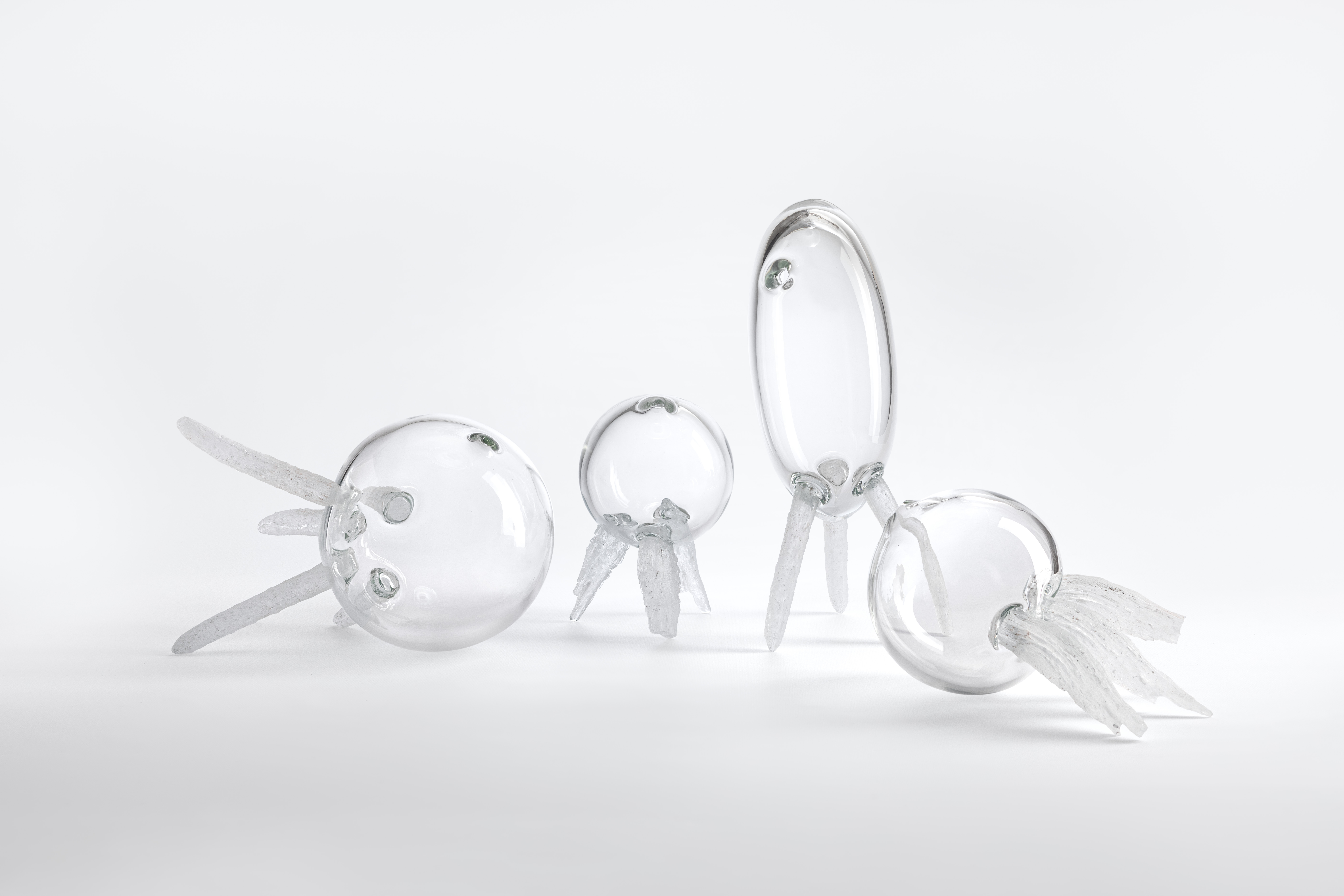17/06 – 31/08/2021 Galerie Kuzebauch
18/06 – 31/10/2021 Sýpka Lemberk
Examining the relationship between the external and the internal and an interplay of light directly within given art objects – such characteristics have been evident in the works of Čestmír Suška since the early 1990s. The work Vnitřní světlo (Internal Light) represented a breakthrough series of sculptures, in which the artist shifted the observer’s attention towards gazing through small openings and peepholes into an archetypal dwelling made from baked clay. Observers could thus look on in wonder at a number of illuminated and often surprisingly segmented internal worlds. In subsequent phases of his work Čestmír Suška has continued to promulgate the theme of internal space, with wood-related art in particular opening up a plethora of expressive opportunities.
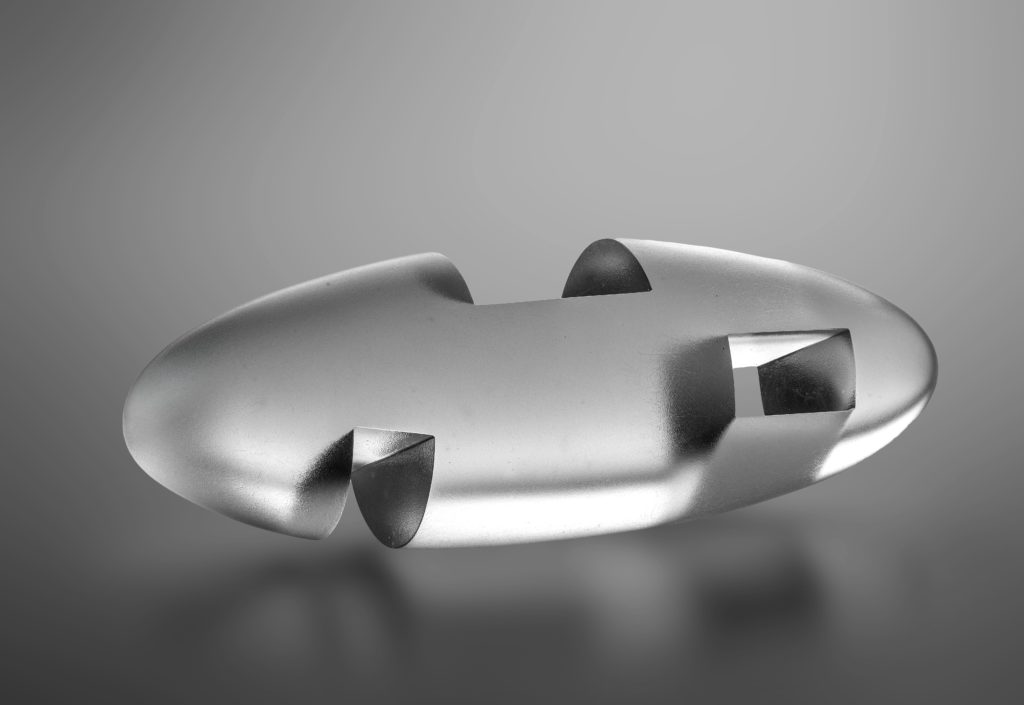
Bob 2004
Ø 17 x 49 cm
Foto © Gabriel Urbánek
The process of simplification yields harmonically crafted shapes that honor natural materials and enable them to shine resplendently via their inherent raw beauty. Suška also re-imagines ancient tree trunks, whose existing nooks and crevices are utilised and further carved up and thinned down right to their cores.
The roots of Suška’s expanded artistic scope are evident in his glass works from 2002 onwards, notably in their light permeability and other optical characteristics. At first glance, these artworks resemble similar-looking wooden statues; but, upon closer inspection, their transposition into a transparent material offers deeper qualities. The works pull us beneath the surface towards the discovery of an internal world of harmonic beauty characterised by expertly crafted forms, replete with an inward thrust of light rays shining through the pure crystal material. By surrendering to the transparency of glass the artist is able to allow a full intensity of light into his sculptures, along with the entire outside world.
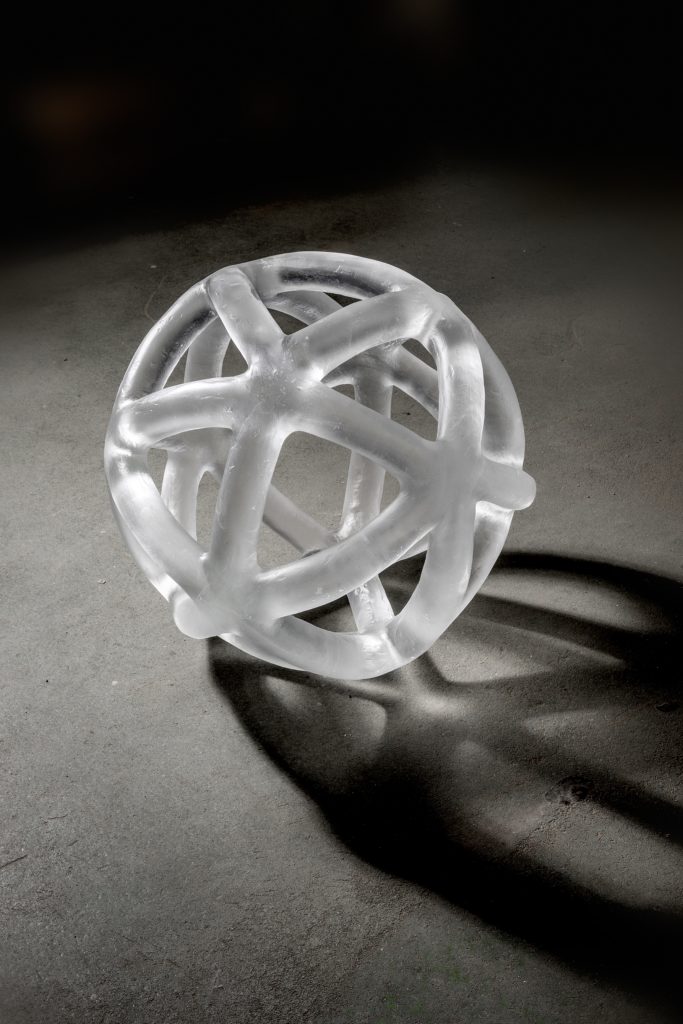
Hvězdice, 2002
Ø 52 cm
Foto © Gabriel Urbánek
The collection of sculptures exhibited in Galerie Kuzebauch was primarily created in 2002–2006 at Zdeňěk Lhotský’s Pelechov studio. One of the oldest works, titled Maska (Mask), has today become an iconic portrait representation of the author’s honouring of the field of sculpting. Meanwhile, Hvězdice (Starfish), with its baked clay shape, represents an exploration of the contradictions between the full and the empty. Osmička (Eight) represents an interplay between the presently trivial and the mysterious and moves the observer into a symbolic realm of infinity. It is a rare opportunity indeed to be able to observe a self-contained collection of Čestmír Sušky’s unique glass art works.
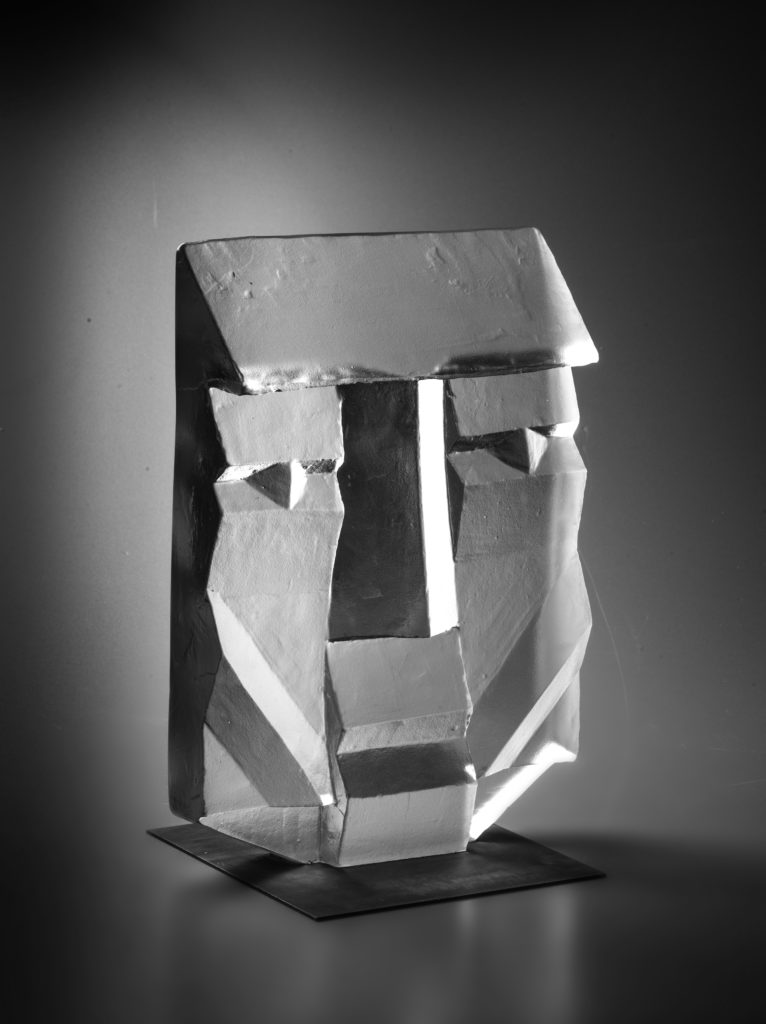
Maska, 2002
36 x 25 x 7cm
Foto © Gabriel Urbánek
The Light in Sculpture exhibition also extends into the Lemberk Granary site, a historical disused baroque granary building in northern Bohemia undergoing extensive renovation. Here, two steel sculptures by Čestmír Suška will be mounted during summer 2021, marking the launch of Happy Materials’ first season in Lemberk.
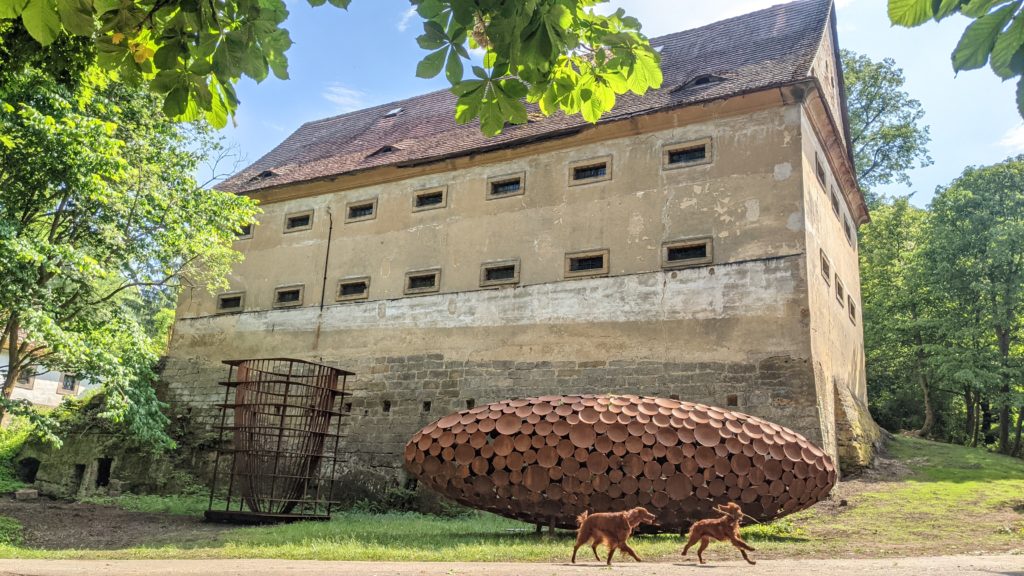
The musical metal plate work Kalich (Goblet) will chime, and a nine-metre ellipsoidal construction made from steel discs, known as Bochník (Loaf), will serve as a meditation place in sculpture for visitors. These serve as further examples of Suška’s mammoth sculptures, including observation stations and gazebos, which partly reach into the neighbouring field of architectural design. Their appeal derives from a combination of aesthetic and functional elements, and surprising experiences, which present themselves upon a visitor’s entry through small doors into an inner space. Such a physical step into an artistic work is rather unique in the annals of artistry. A visit within the sculptures of Čestmír Suška gains even greater aesthetic dimensions via the openings and shafts of light shining through the lines of this artist’s remarkable works.
Simona Martínková
Exhibition curator

